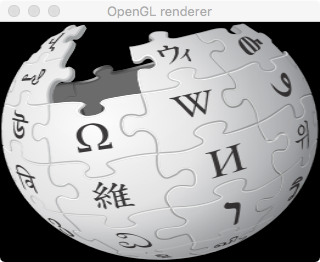mirror of
https://github.com/matthew1000/gstreamer-cheat-sheet.git
synced 2024-11-21 16:00:59 +00:00
2.1 KiB
2.1 KiB
Images (GStreamer command-line cheat sheet)
Images can be added to video. In addition, video can be converted into images. This page looks at both types.
Including images in video
Gstreamer can show images on video using the imagefreeze element.
Create a video from an image
export PIC="https://upload.wikimedia.org/wikipedia/en/thumb/8/80/Wikipedia-logo-v2.svg/263px-Wikipedia-logo-v2.svg.png"
gst-launch-1.0 \
uridecodebin uri=$PIC ! \
imagefreeze ! \
autovideosink
Create a video from multiple images
Here's the same image four times, done with the help of compsitor (a mixer):
gst-launch-1.0 \
compositor name=m sink_1::xpos=263 sink_2::ypos=240 sink_3::xpos=263 sink_3::ypos=240 ! autovideosink \
uridecodebin uri=$PIC ! videoscale ! video/x-raw, width=263, height=240 ! imagefreeze ! m. \
uridecodebin uri=$PIC ! videoscale ! video/x-raw, width=263, height=240 ! imagefreeze ! m. \
uridecodebin uri=$PIC ! videoscale ! video/x-raw, width=263, height=240 ! imagefreeze ! m. \
uridecodebin uri=$PIC ! videoscale ! video/x-raw, width=263, height=240 ! imagefreeze ! m.
Capturing video output as images
Capture an image as PNG
The pngenc element can create a single PNG:
gst-launch-1.0 videotestsrc ! pngenc ! filesink location=foo.png
### Capture an image as JPEG
The jpegenc element can create a single JPEG:
gst-launch-1.0 videotestsrc ! jpegenc ! filesink location=foo.jpg
Capturing images every X seconds
This example captures one frame every 3 seconds, and places it in files with the format img00001.jpg.
It also displays the video (as the tee command sends the video to both multifilesink and autovideosink).
To change the frequency, change the framerate=1/3.
e.g. framerate=2/1 would capture a frame twice a second.
gst-launch-1.0 -v videotestsrc is-live=true ! clockoverlay font-desc=\"Sans, 48\" ! videoconvert ! videorate ! video/x-raw,framerate=1/3 ! jpegenc ! multifilesink location=file-%02d.jpg
